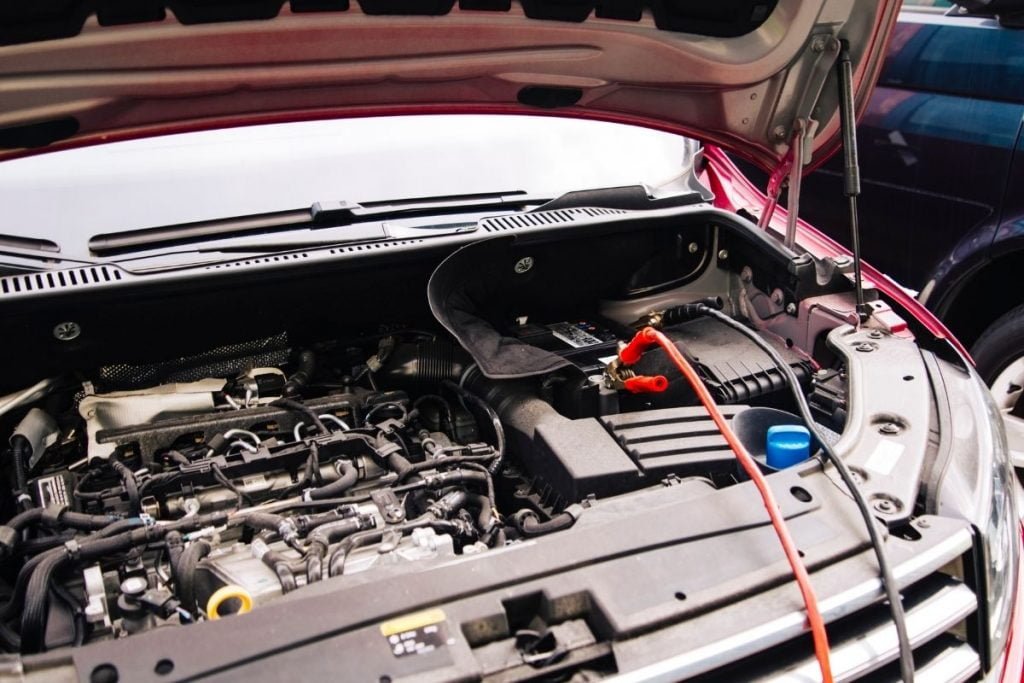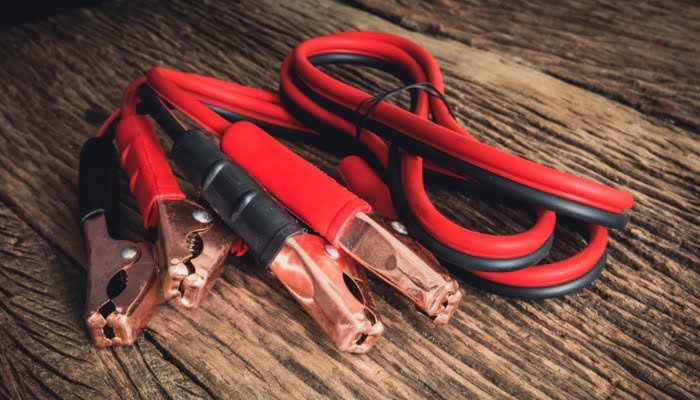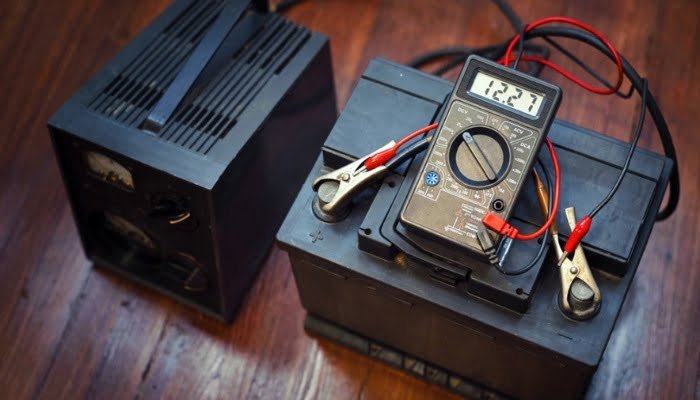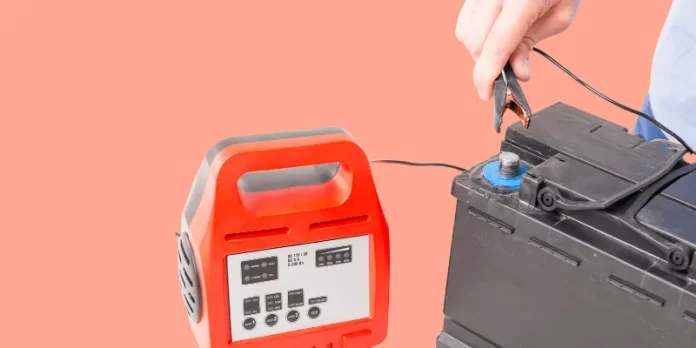Last updated on January 24th, 2024
Having a flat car battery can be a frustrating experience. It could cause worry, especially when you’re caught up in an emergency.
The good thing is that many vehicles, while driving at certain speed levels, charge the car battery effectively and efficiently without using any external electrical equipment.
So, if you’ve been asking, “Do Car batteries charge while driving?” We’ve compiled a detailed answer for you.
In this article, we will discuss the protocol for charging the battery of a car and the risks that could occur while following these protocols.
We will also discuss the time it takes to charge a car’s battery while driving and supply information on various car battery chargers. Let’s get to it!
What is the Time Range for Charging a Car Battery?
Certain things must be considered when determining the charge period of a car battery. Here are some of the factors:
Power Level of Car Battery
Where the battery of your car has no power left in it and is flat, the battery will take more time to fully charge.
On the other hand, if your car battery still has some power left in it, the time range for its full charge will be significantly shorter.
Car Charger’s Charge Amperage Capacity
A charger with a greater amperage capacity will charge your car battery faster than a car battery charger with a lesser amperage capacity.
Take note that where the health of your car battery is your priority, a battery charger with a high amperage capacity may not be the charger to be considered.
Size of Car Battery
A small-sized car battery takes a shorter period to charge to full capacity than a car battery of a bigger size.
Dormant or Active Car
The current state of the car, whether dormant or active, also influences how fast its battery will charge.
Where a car is on the move, it makes it easy, safe, and quick for the car battery to charge to full capacity.
Note that if the car is not moving, the battery will still be in charge mode, provided the car is active.
When the car is dormant, its battery will charge, but not to full capacity as the car alternator can’t generate enough voltage to do so.


Which is the Most Suitable Charger for a Car Battery?
It is important to consider the amperage hour rating of your car battery first before purchasing a battery charger for your vehicle.
This consideration is to ensure that the amp capacity of your car battery charger is at least 10% of the amp hour rating of your car battery.
This capacity analysis would mean that a 1000 amp hour rating car battery would need a battery charger of 100 amps (minimum).
As mentioned earlier, to charge your car battery faster, you could use a charger with a high amp, but doing this would bring great risk to your battery life.
What are the Battery Charges for Cars?
Listed below are battery chargers for cars along with their estimated battery charge time:
40-amp Charger
This car battery charger has quick, adequate, and effective charging potential. This fast car battery charger can bring your car battery to full capacity within a short period of time.
10-amp Charger
The 10-amp battery charger can take some time to bring a car battery to full capacity.
Where a car battery that is large has no power present in it, it would approximately take this charger about 8 to 14 hours to reach full capacity.
In contrast, it’s a medium-sized battery that can charge for about 6 to 8 hours, and a car battery of a small size for about 4 to 6 hours.
Charger with 4 and 2 amp
Due to their low amp capacity, these charger types take more time to charge a car battery to full power. They’re selective, as they work better on mainly small-sized batteries.
It would take the car battery charger with 4 amps about 12 hours to fully charge a battery of 48 amps, while the charger with 2 amps takes about 24 hours to fully charge a battery of 48 amps.


Kinds of Car Battery Chargers
Take note that car batteries have three kinds of chargers. They are:
- Trickle car battery chargers
- Linear car battery chargers and
- Multi-stage car battery chargers
Charging your car battery using a car battery charger proves to be a good strategy to opt for when your car battery needs a charge, especially in times of emergency.
This is particularly so because it works fine when the preservation and maintenance of car battery health is a priority in a car you don’t often make use of.
Nevertheless, where maintenance and preservation of your car battery are concerned, the best car battery charging option is to drive your car.
How Long Does a Car Battery Take to Charge While Driving?
The alternator of a vehicle is responsible for the preservation and maintenance of the battery power in the car. It is also what charges your car’s flat battery.
The alternator spins fast, thereby generating power while the car is driving.
On average, it takes about 30 minutes to 1 hour to complete the charge of the car battery.
What determines a car battery charge time is the number of times the car engine revolves per minute.
An average of 1000 engine RPM (Revolutions Per Minute) will be required from the car engine to charge the car battery completely.
Also, the farther a car is driven, the more revolutions occur per minute.
Furthermore, driving with a speed limit higher than 55 mph will speed up the charge of the car battery.
Again, more revolutions will be generated per minute, thereby bringing the battery to full power when you drive on a highway, for instance, or on a significantly narrow and long road.
Notwithstanding, a car battery will still charge when a car is driven within a city or around a downhill; the downside to this is that it will take a longer period to charge to full power.
To speedily charge up your 12-volt battery, for instance, to full power, it is more recommended to drive on roads where little or no traffic at all can be found.


Charging a Car Battery During an Emergency
Where maintenance and preservation of your car battery are concerned, the best car battery charging option is to drive your car.
One reason for this is that some chargers used externally for car battery charging purposes can pose a risk to the battery and may even cause irrecoverable damages to the car battery when used wrongly or frequently.
Notwithstanding, external battery chargers for cars are very helpful when your car runs down unexpectedly and the battery needs to be charged quickly.
Many drivers usually choose the option of jump-starting their car batteries when they encounter an emergency.
This could prove to be a very helpful and quick way of charging your car’s battery in such situations.
However, note that a car battery after it has been jump-started will only drive for approximately 10 to 15 minutes, after which it will run down again.
This makes jump-starting your car battery a short-term solution, though very effective during an emergency.
Jump-starting your car battery affects your alternator as it puts lots of pressure on it, which could lead to a major problem that requires expert repairs or even replacement.
On this note, resorting to a jump-start whenever your car battery runs out may not be considered the best solution all the time during an emergency.
Using the jump-start method occasionally may be considered acceptable, but doing so regularly with jump cables may lead to heavy damage.
Ensure to request assistance from roadside professionals who will have the required knowledge and the right tools to charge your car battery anytime you find it difficult to charge the battery of your car in an emergency.
FAQs
Is revving my car engine a faster option for charging a car battery?
Revving your car’s engine is a faster method for charging your car’s battery. Every time the engine is revved, the car’s alternator increases the battery amp because this makes the alternator run more quickly. This method will charge faster than a car battery that is flat.
How regularly should a car be started to keep its battery charged?
Drivers should ensure to start up their cars once every week to ensure the battery is charged. The best thing to do to ensure your car battery is fully charged is to drive your car. As mentioned already, driving is the quickest method for charging your car battery.
After jump-starting a car battery, how long will it take to charge the battery?
In times of emergency, you may be required to jump-start your car. Jump-starting the battery of a car does not fix your car problem for long, but it is a sure way to quickly get your car battery active again when it runs down unexpectedly.
It usually takes about 30 minutes after a jump-start for the battery of a car to charge. This would require you to drive around for about 30 minutes to charge the car battery to full capacity.
Is it necessary for your car to move in order for the battery to charge?
For the battery of your vehicle to charge, the car needs to not be moving. Rather, it is the movement of the car alternator that charges your battery. As the engine of the car is running, the car doesn’t need to be moved; this engine movement will cause the alternator to move, thereby charging the car battery.
It is to be noted that when the car is not moving while the alternator is moving, the power generated from the alternator will be small, which will charge the battery slowly. The alternator will move faster and give more power to the battery of the car when it is driving.
How can the battery of a car be preserved when it is not being used?
To ensure that the battery of your car does not run down when you don’t use it for some time, locate and unplug the connections in your car that drain the battery power, for instance, dash cams. Ensure you don’t turn on your car engine and immediately turn it off again.
Anytime the engine of a car is turned on and immediately turned off without the intention of driving the car or allowing the engine to steam for a while, it could cause severe damage to your car battery. Another option would be to use a battery conditioner or a trickle car charger to help preserve the battery power of your car when you’re not using it.
Final Words
The battery of cars usually doesn’t need so much attention. To ensure the battery of your car is charged and effective, pay attention to exceeding the 55 mph speed limit on a regular basis while driving your car.
If you have always wondered what time range it takes for a car battery to charge while driving, hopefully this article has supplied you with the answers you need.



